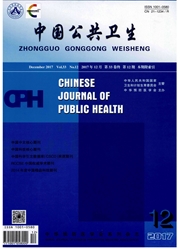

 中文摘要:
中文摘要:
目的 了解在基本医疗保险补偿后对于家庭卫生支出的变化,探讨发生家庭灾难性卫生支出(CHE)的概率及其发生的影响因素。方法 利用国社科项目课题组2014年在中国八地的实证调查的数据,以灾难性卫生支出发生率、平均差距和相对差距为测量指标,并采用logistic 模型分析发生灾难性卫生支出的影响因素。结果 北京、辽宁、山东三地在医保报销后CHE发生率下降幅度最大,分别为4.87%、2.078%、1.71%;在平均差距指标上,陕西、山西、北京下降最明显,分别为7.25%、5.79%、2.88%;在相对差距上,陕西、山西、天津最明显,分别为92.44%、74.25%、56.17%;医保种类、家庭年收入和医保实际报销水平是灾难性医疗发生的影响因素。结论 基本医疗保险在减少灾难性卫生支出起到了积极的作用。
 英文摘要:
英文摘要:
Objective To examine changes in household catastrophic health expenditure (CHE) after the implementation of basic social medical insurance (BSMI) compensation and to explore the probability and influencing factors of household CHE.Methods An empirical data of a survey conducted in 8 provinces and municipalities in 2014 were used to estimate the incidence,the average gap and the relative gap of disastrous health expenditure among Chinese families.Logistic model was used to analyze the influencing factors of CHE.Results After the implementation of BSMI compensation,the incidence of CHE decreased by 4.870%,2.078%,and 1.706% among the families in Beijing municipality,Liaoning,and Shandong province,respectively.The proportion of mean catastrophic payment gap declined by 7.25%,5.79%,and 1.71% among families in Shanxi province,Shanxi province,and in Beijing municipality,respectively.The relative gap for CHE was 92.44%,74.25%,and 56.17% for families in Shaanxi province,Shanxi province,and Tianjin municipality,respectively.The type of medical insurance,annual household income and the actual reimbursement level of BSMI have influences on CHE.Conclusion BSMI plays a positive role in decreasing catastrophic health expenditure for families in China.
 同期刊论文项目
同期刊论文项目
 同项目期刊论文
同项目期刊论文
 期刊信息
期刊信息
